Apply now to join our next cohort of Community Science Fellows and Community Leads!
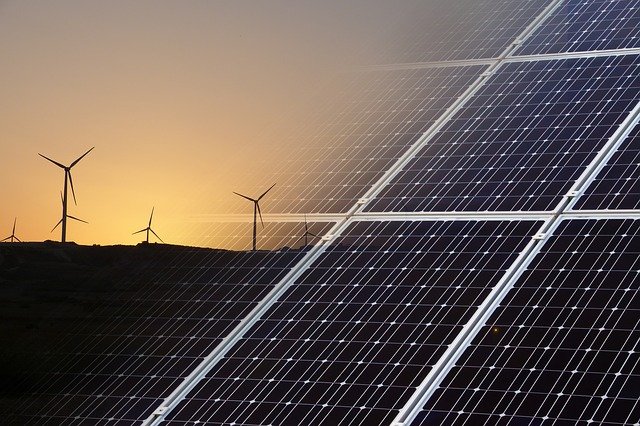
Image from pixabay.com
From the national to the local level, significant changes in energy systems are underway to both mitigate and respond to the anthropogenic climate crisis (ACC), and the ongoing crisis of inequity. Among these changes are a shift to energy sources other than fossil fuels, and a rethinking of the organization, control and scale of energy systems. For example, community choice aggregation means that by joining together at the city or regional level, residents have the option to access energy produced by alternative sources better aligned with community values for today and the future. Some solar technologies create opportunities for energy production and control to be further localized, even at a neighborhood level. Given the need posed by the ACC, and the potential of new strategies, this project explored how to center community priorities in discussions of local clean energy design in Fresno, CA.
Fresno County, with a 2020 population of over 999,000, is located in California’s Central Valley, and is home to 1.88 million acres of the world’s most productive farmland, with agricultural operations covering nearly half of the county’s entire land base of 3.84 million acres. This is an area rich in cultural diversity and strengthened by the hope and hard work of immigrants and other families over generations.
The City of Fresno, with a 2019 population of 531,576, is the fifth largest city in California. Fresno is a majority “minority,” with over 49% of the population identifying as Latinx, and with an estimated 25% of the city’s population living in poverty, and a median annual household income, averaged over 2015-19 of $50,432.
The City of Fresno and the Central Valley in general, experience high summer temperatures with a current (2005 – 2020) annual average temperature in the city of 77oF, and 46 days above 100oF annually. Projections for the next 30 years under the most conservative climate change scenario (RCP 4.5) are for an annual average of 80oF, with 58 days over 100oF.
CalEnviroScreen is a mapping tool that identifies California communities most at risk from a combination of environmental contamination and population vulnerabilities. The Draft CalEnviroScreen 4.0 identifies most census tracts in the City of Fresno as being in the 90 – 100th percentiles statewide for highest pollution burden, as well as having similarly high levels of environmentally-influenced non-communicable diseases, and many indicators of socioeconomic insecurity, lack of opportunity, and poverty.
The goal of this project is to support greater community voice in clean energy options and decision-making at the neighborhood and city levels, looking at the case of low resource neighborhoods in Fresno, California. The original project proposal was written in late 2019 and emphasized community meetings to stimulate community participation. The pandemic lockdown starting in March 2020 made the original plan impossible, but allowed us, the community + TEX project team, to reflect and consider other approaches for accomplishing the project goal.
Over the one year duration of the project, our thinking and the methods we considered changed, as outlined in the recalculations described below. This was because of our discussions, and especially from consultations with representatives of active CBOs working with the same populations in Fresno. In particular, the CBO representatives made the urgency of the pandemic and inequity crises in the community clear, and helped us recognize three central challenges to equitable engagement in decision-making around alternative energy systems:
At the project’s start, there was an online public survey drafted by community partners. With lockdown, we turned to that survey as a tool to assess community knowledge of energy issues.
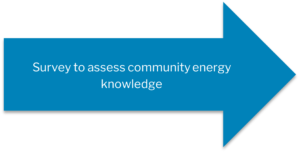
Recalculation 1. The project worked to refine the survey, identifying key issues to ask the public about, consulting with two CBOs, and creating consistent response formats that could be interpreted clearly. Through our discussions, two key changes were made to the survey. First, directly related to the TEX partnership, the purpose of the survey broadened to include identifying the area of scientific support of most interest to the public. Second, a question was added regarding the non-energy issues of most importance to respondents. In early February 2021 the 13 question survey was finalized, translated into Spanish, and posted online in both languages.
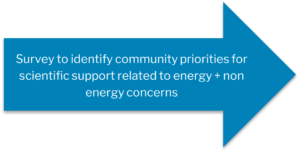
Based on the poor response to the online survey (n = 4, June 2021), and our own learning from attempts at administering it in person, we realized this was not an effective approach for now.
Recalculation 2. The project then scheduled an online listening session, inviting representatives of over 10 Fresno CBOs with related interests. The session’s goal was to listen to and learn from CBO experience regarding community engagement, with the idea of improving the survey and preparing for next steps in the project. Representatives of seven CBOs participated in the May 7, 2021 session. Suggestions were given for outreach methods, but the primary findings of the session were that the pandemic has been extremely impactful on people’s mental and emotional health, and that the most important characteristic of scientists who may partner with the project is not their disciplinary specialty, but rather a holistic, empathic perspective and focus on community needs.
Together, our experiences with the survey and the listening session demonstrated that a different approach was needed both to give residents a reference point for energy alternatives, and to shift from making demands for responses and information, to providing positive experiences for residents of all ages.
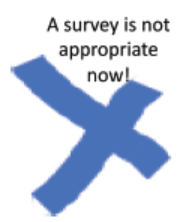
Recalculation 3. We have re-oriented the project to creating and testing opportunities for fun experiences that provide residents with community gathering, healthy refreshments, and an opportunity to see and interact with neighborhood scale alternative energy installations that are feasible in their community. Project team members and colleagues will be present to explain the installation and answer questions. We will experiment with unobstructive, informal surveying of participants regarding what issues are most urgent for them, and which questions they most want answered related to alternative energy.
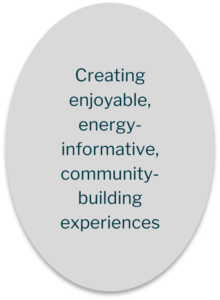
Although previous iterations of the survey always included raffles as small tokens for participation, that was simply too small and uncertain to motivate, and adequately compensate people for participation. In addition, alternative energy and related questions are difficult for any of us to understand without direct experience. We hope the new approach will introduce residents to the possibility of energy alternatives, and also provide an enjoyable experience.
This project started in August 2020 and has evolved over the year since through our own learning and the advice from experienced local CBOs. Through recalculations of our objectives and methods, our focus has shifted from what we want/need to know about the community and its energy knowledge, to what the community needs – fun, relaxation, being seen – as well as what the community is never given an opportunity to experience and think about.
As we plan the first community event of this type, it feels as though this approach is a step towards addressing the three major challenges outlined above:
The learning and listening process have been valuable for each of us on the project team. While many sources caution us to prioritize the community, or listen to the community, our experience has taught at least one of us (DS) that it is easy to think that, but not actually do that. Instead, focusing in on a task can distract you from hearing or prioritizing the community until you realize that both focus and open attending are essential.

Finally, the pandemic posed difficulties for a project originally planned to be in person, with many potential participants with poor online connectivity and little experience with that form of interaction. In addition, pandemic shifts in priorities and work assignments for the project team has meant that this project has become additional to their primary workload, and therefore difficult to prioritize. We look forward to the continued evolution of this project and hope that our experiences will be useful to others!
Ali Andrews, Shake Energy Collaborative
Destiny Rodriguez, The Climate Center
CBO partner:
Other CBOs consulted:
Daniela Soleri, UCSB
(c) 2024 Thriving Earth Exchange